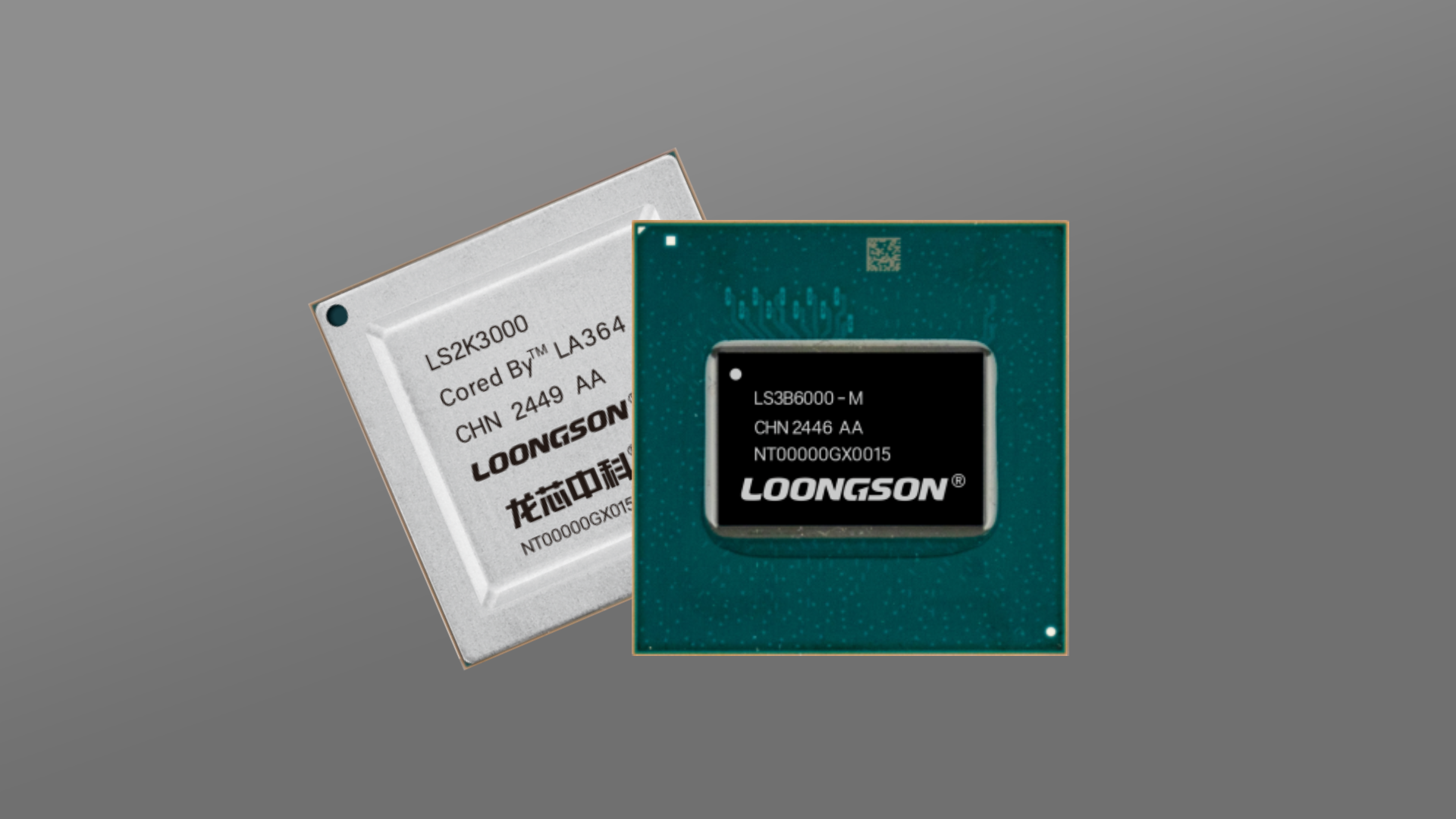Chinese chipmaker Loongson's new laptop and industrial chips have higher core counts, better GPU

Loongson, a fabless Chinese CPU manufacturer, announced the successful tapeout of two new processors, the 2K3000 and the 3B6000M, designed for industrial control and mobile, respectively. Both chips employ the same underlying silicon but have been uniquely packaged for their target markets. It's important to note that reaching High Volume Manufacturing (HVM) for these chips may take some time, and we're likely months away from seeing them being produced at scale.
Based on Loongson's roadmap, the 2K3000 family is overdue, as it was initially scheduled for late 2024. The CPU in question offers an eight-core LA364E-based CPU with a base frequency of 2.5 GHz. In-house testing shows the CPU can hit 30 points in integer performance under SPEC CPU2006, which is hard to compare against modern-day CPUs, as the software was retired in 2018.
Either way, even at iso-frequencies, this performance pales in contrast to the desktop 3A6000 based on the LA664 architecture. Due to Loongson's unclear naming scheme, it's hard to definitively say which architecture is more recent. Then again, we're probably barking up the wrong tree, given the age of SPEC CPU2006.
The iGPU (integrated GPU) draws its lineage from Loongson's recently introduced LG200 GPGPU (General Purpose GPU). Loongson claims in addition to basic graphics acceleration with OpenGL 4.0 support, the built-in GPU can also power lightweight AI workloads rated at 8 TOPS of INT8 performance, alongside 256 GFLOPS for FP32 compute. While FLOPS aren't a perfect indicator of real-world performance, that's somewhat faster than the original Nintendo Switch's GPU in handheld mode.

Both chips are said to integrate independent hardware encoding and decoding modules, capable of displaying output to three interfaces (eDP/DP/HDMI) at up to 4K at 60 FPS. Loongson has also implemented Chinese SM2/SM3/SM4 cryptographic standards directly in hardware for security. Regarding I/O, we get support for PCIe 3.0, USB 3.0/2.0, SATA 3.0, GMAC for Ethernet, eMMC for storage, SDIO, SPI, LPC, RapidIO, and CAN-FD.
These chips further segment and diversify Loongson's desktops, servers, and mobile/industry offerings. Chinese manufacturers are likely to integrate the 3B6000M into domestic laptops, tablets, smartwatches, retro handhelds, and other devices.
Meanwhile, the industrial control counterpart (2K3000) is better suited for PLCs, HMIs, and edge servers. Given that support for Loongarch is still quite limited, Huawei is reportedly prepping a new desktop/laptop Arm-based chip dubbed Kirin X90 for its upcoming AI PCs, rumored to be powered by HarmonyOS.
Get Tom's Hardware's best news and in-depth reviews, straight to your inbox.

Hassam Nasir is a die-hard hardware enthusiast with years of experience as a tech editor and writer, focusing on detailed CPU comparisons and general hardware news. When he’s not working, you’ll find him bending tubes for his ever-evolving custom water-loop gaming rig or benchmarking the latest CPUs and GPUs just for fun.